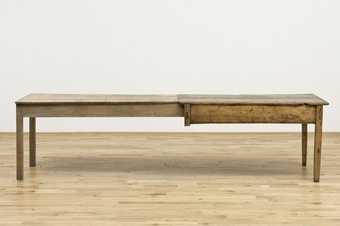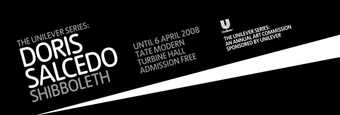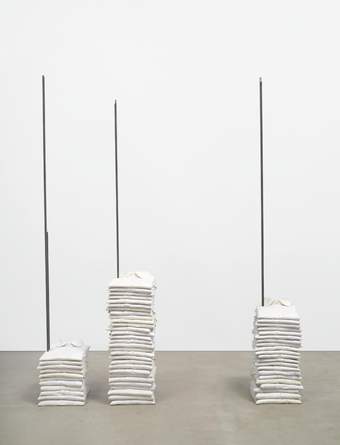Shown here for the first time in Europe, Unland is a series of three recent sculptures by the Colombian artist Doris Salcedo. For the artist the title evokes the continuing displacement caused by the violence of the civil war in Colombia. Salcedo's work stems from the suffering inflicted upon the people of her country by a corrupt regime and widespread criminal activity, which has resulted in the disappearance and death of thousands of people over the past fifty years. As Dan Cameron has commented:
She focuses our attention on the link between having one's life disrupted by experiencing the secret or public execution of a loved one and the broader issue concerning the rights of one group to exercise sovereignty over another. Bridging the gap between these two seemingly disparate points of human experience – the private workings of grief and the public spectacle of politics – is how Salcedo's art derives its ultimate meaning. Although the policies of 'ethnic cleansing' that characterise the war in the former Yugoslavia might seem quite distinct from the almost random carnage in Colombia, the two conflicts are linked on the most elemental level: someone with power and arms is convinced that the land someone else is occupying belongs to him.
From her perspective as a perpetual witness to an ongoing atrocity, Salcedo has formulated a singular hope: in order to stop the bloodshed, the ruling powers would have to embrace a belief more closely held by indigenous peoples than by those who would displace them -while a people can be said to belong to the land, the notion that the land could ever belong to anyone, collectively or otherwise, is obscene.[fn]Dan Cameron, 'Inconsolable', Doris Salcedo, New Museum of Contemporary Art, SITE Santa Fe, 1998, p.12.[/fn]
In her art Salcedo uses everyday domestic and personal items, such as furniture and clothing, and organic substances, such as bone, hair and animal fibre. These materials are brought together to make evocative works that address loss, grief, pain, memory, absence and mourning. Salcedo begins new work by undertaking research about her chosen topic, as well as wider reading, so that, for example, the individual titles of works in the Unland series are drawn from the poems of Paul Celan She gets to know the survivors of violence, those who have lost loved ones or friends at the hands of soldiers, drug lords, death squads or terrorists, in order to bear witness to the ordeal they have endured. The artist transforms their accounts into restrained yet powerful memorials to those who have lost their lives. Unlike the idea of the monument which restores or preserves memory as part of a cultural heritage, the work of Doris Salcedo exposes the silent history revealed by individual memory. As she has said: 'Sculpture for me is the giving of a material gift to the being who makes his presence felt in my work.'
The sculptures in the Unland series take the form of three extraordinary, exquisitely fragile tables, Unland: the orphan's tunic (1997), Unland: irreversible witness (1995-98) and Unland: audible in the mouth (1998). The orphan's tunic is divided into three areas, two of which are treated with raw silk and human hair. The hair is sewn into the table, passing through thousands of holes drilled into the wood. Irreversible witness has hair sewn both above and below the raw silk, forming a skin over the surface and producing a subtle luminescence. At one end the metal frame of a doll's crib, also covered in a delicate shroud of hair and silk, seems to sink into the tabletop. Audible in the mouth is densely covered with a thick web of hair and silk threads that bunch along the middle of the table evoking a spine.
The works in Unland seem to describe a remarkable state of being: they are inanimate objects which duplicate the organic growth processes of the deceased as a way of keeping their presence alive. Dan Cameron writes: 'On the one hand, Unland opens the door to a terrible beauty; on the other it helps to pave the way towards our coming to terms with those millions of humble individuals who confront the unendurable every day of their lives, and miraculously prevail.'[fn]Ibid.[/fn]
Biography
Born 1958. Lives and works in Bogota, Colombia 1984 MA (Sculpture), New York University. 1993 Penny McCall Foundation Grant.



